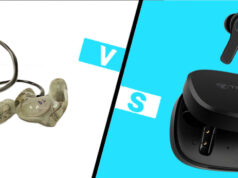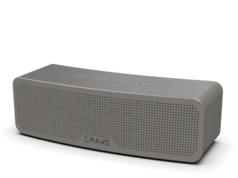Amazing 5 Top-Tier Features Defining Flagship Smartphones
Amazing 5 Top-Tier Features Defining Flagship Smartphones
Related Articles: Amazing 5 Top-Tier Features Defining Flagship Smartphones
Introduction
In this auspicious occasion, we are delighted to delve into the intriguing topic related to Amazing 5 Top-Tier Features Defining Flagship Smartphones. Let’s weave interesting information and offer fresh perspectives to the readers.
Table of Content
Amazing 5 Top-Tier Features Defining Flagship Smartphones

Flagship smartphones. The pinnacle of mobile technology, promising unparalleled performance, innovative features, and a premium experience. But with so many options vying for your attention and your hard-earned cash, how do you cut through the marketing hype and identify the truly standout features that justify the premium price tag? This article delves into five key areas where flagship phones consistently excel, showcasing the technological advancements that make them a compelling choice for discerning users.
1. Unrivaled Processing Power and Performance:
The heart of any flagship smartphone beats with a powerful processor, and this is where the significant difference between budget and premium devices becomes readily apparent. Flagship phones boast the latest system-on-a-chip (SoC) technology from giants like Qualcomm (Snapdragon) and Apple (A-series). These aren’t just incremental upgrades; they represent generational leaps in processing power, graphics capabilities, and overall efficiency. This translates to a smoother, more responsive user experience, regardless of whether you’re gaming, multitasking, or simply browsing the web.
The impact of this superior processing power is multi-faceted. Firstly, you’ll notice dramatically reduced lag. Applications launch almost instantaneously, transitions between screens are seamless, and even demanding games run at high frame rates with minimal stuttering. Secondly, artificial intelligence (AI) features become significantly more powerful and responsive. Flagship phones are able to process complex algorithms in real-time, enabling features like advanced computational photography, real-time language translation, and sophisticated voice assistants that truly understand your commands. Thirdly, the enhanced processing capabilities contribute to improved battery life. While power consumption is always a balancing act, the efficiency gains from newer SoCs allow flagship phones to perform complex tasks while still maintaining impressive battery endurance.
The difference between a flagship processor and its mid-range counterpart is readily apparent in benchmark tests. While synthetic benchmarks shouldn’t be the sole determinant of performance, they provide a quantifiable measure of the raw processing power. Flagship SoCs consistently outperform their mid-range counterparts by a significant margin, often doubling or tripling the scores in CPU and GPU benchmarks. This raw power translates directly into a superior user experience, making even the most demanding tasks feel effortless. The advanced architecture of flagship processors also contributes to improved thermal management, preventing overheating even under sustained heavy load. This is a critical aspect often overlooked, as overheating can lead to performance throttling and a diminished user experience.
2. Stunning Display Technologies:
The visual experience is a cornerstone of the smartphone experience, and flagship phones deliver in spades. These devices typically boast high-resolution displays with vibrant colors, exceptional brightness, and superior contrast ratios. Beyond simple resolution (measured in pixels per inch or PPI), flagship displays often utilize advanced technologies like AMOLED (Active-Matrix Organic Light-Emitting Diode) or OLED (Organic Light-Emitting Diode) panels. These self-emissive display technologies offer several advantages over traditional LCD (Liquid Crystal Display) panels, including deeper blacks, higher contrast, and superior color accuracy. The result is a more immersive and visually stunning experience, particularly when consuming media like movies or playing games.
Beyond the basic display technology, flagship phones often incorporate additional features to enhance the visual experience. High refresh rate displays (90Hz, 120Hz, or even higher) offer smoother scrolling and animations, making the overall interface feel more responsive and fluid. Adaptive refresh rate technology intelligently adjusts the refresh rate based on the content displayed, optimizing battery life without sacrificing visual smoothness. Furthermore, many flagship phones feature HDR (High Dynamic Range) support, enabling a wider range of colors and brightness levels for more realistic and visually impressive images and videos. This results in a richer, more detailed image that truly pops off the screen. The integration of HDR with advanced display technologies like AMOLED further enhances the visual fidelity, making flagship phones ideal for media consumption.
The impact on the user experience is substantial. Watching videos on a high-resolution, high-refresh-rate AMOLED display is significantly more enjoyable than on a lower-end LCD panel. The colors are more vibrant, the blacks are deeper, and the overall image quality is noticeably superior. This is particularly true for content that is mastered in HDR, where the increased dynamic range allows for a more realistic and immersive viewing experience. Even simple tasks like browsing the web or reading emails become more pleasant thanks to the improved clarity and readability of the display.
3. Advanced Camera Systems:
Camera technology has become a fiercely competitive battleground in the smartphone industry, and flagship phones consistently lead the charge. These devices often feature multiple cameras with varying focal lengths and capabilities, allowing for greater versatility and creative control. This includes wide-angle lenses for expansive landscapes, telephoto lenses for optical zoom and portrait shots, and ultrawide lenses for capturing more of the scene. Beyond the hardware, flagship phones leverage advanced image processing algorithms and AI-powered features to enhance image quality and produce stunning results.
Flagship camera systems often incorporate features like optical image stabilization (OIS) to reduce blur in low-light conditions, larger sensor sizes to capture more light, and advanced computational photography techniques like night mode to improve low-light performance. These features work in concert to deliver photos and videos with superior detail, dynamic range, and overall quality. AI-powered scene detection automatically optimizes camera settings for different scenes, ensuring that you capture the best possible image regardless of the subject matter. Furthermore, flagship phones often feature advanced video recording capabilities, including support for high frame rates, high resolutions (like 4K or even 8K), and features like cinematic video modes for professional-looking results.
The difference in camera quality between a flagship phone and a mid-range device can be dramatic. Flagship phones consistently outperform their mid-range counterparts in low-light performance, detail retention, and overall image quality. The advanced features and algorithms ensure that even casual users can capture stunning photos and videos with minimal effort. The versatility of multiple lenses allows for greater creative control, enabling users to experiment with different perspectives and capture a wider range of scenes.
4. Superior Battery Life and Fast Charging:

Battery life is a crucial consideration for any smartphone, and flagship devices typically offer impressive endurance. While the battery capacity itself might not always be the largest, flagship phones often employ power-efficient hardware and software optimizations to maximize battery life. This includes intelligent power management features that adapt to your usage patterns, prioritizing power consumption for the apps you use most frequently. Furthermore, flagship phones often feature fast charging technologies, allowing you to quickly top up your battery when needed.
Fast charging technologies like Qualcomm Quick Charge and USB Power Delivery (PD) allow for significantly faster charging speeds than standard charging methods. This means you can spend less time tethered to a power outlet and more time using your phone. Wireless charging is also becoming increasingly common in flagship devices, offering a convenient alternative to wired charging. Some flagship phones even support reverse wireless charging, allowing you to charge other compatible devices using your phone as a power bank. These features are designed to keep you connected and productive throughout the day.
The improved battery life and fast charging capabilities are a significant advantage for users who rely heavily on their smartphones. The ability to quickly recharge your phone when needed eliminates the anxiety of running out of battery power. The longer battery life ensures that you can stay connected and productive throughout the day without needing to constantly worry about finding a power outlet.
5. Robust Security Features:
Security is paramount in today’s digital world, and flagship phones typically offer advanced security features to protect your data and privacy. This includes features like in-display fingerprint sensors or advanced facial recognition technology for secure authentication. These biometric methods provide a more secure and convenient alternative to traditional password-based authentication. Furthermore, flagship phones often incorporate secure enclaves or dedicated hardware for processing sensitive data, protecting it from potential software vulnerabilities. Regular software updates ensure that your device is protected against the latest security threats.
Beyond biometric authentication, flagship phones often incorporate other security features like secure boot, which ensures that only authorized software is loaded when the device starts up. They also often include features like full disk encryption, which protects your data even if your phone is lost or stolen. These security features work in concert to provide a robust defense against unauthorized access and data breaches. The advanced security features found in flagship phones offer peace of mind, knowing that your sensitive data is protected. The investment in robust security is a key differentiator for flagship devices, demonstrating a commitment to user privacy and data protection.
In conclusion, the premium price tag of flagship smartphones is justified by the significant advancements in processing power, display technology, camera systems, battery life, and security features. These five key areas represent the core strengths of flagship phones, offering a superior user experience that significantly surpasses that of mid-range or budget devices. While the cost is undeniably higher, the enhanced performance, features, and overall user experience make flagship smartphones a compelling choice for users who demand the best in mobile technology.

Closure
Thus, we hope this article has provided valuable insights into Amazing 5 Top-Tier Features Defining Flagship Smartphones. We hope you find this article informative and beneficial. See you in our next article!
google.com


















